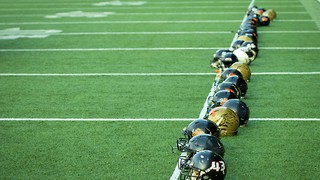‘It felt impossibly romantic’: the nightclimbers of Cambridge
Nightclimbing has been a Cambridge tradition since the 1930s
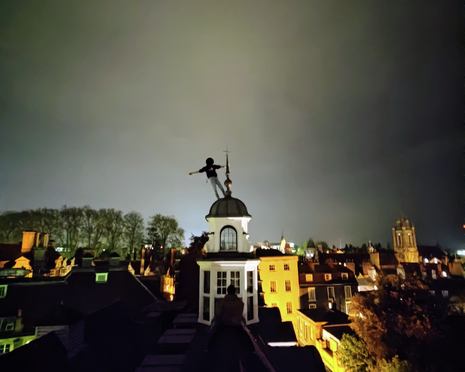
One very late evening at the turn of the millennium, Tom Whipple and 40 other Cambridge students found themselves on the roof of the Fitzwilliam museum.
Having held their boozy annual dinners on the same evening, both the University and Churchill’s climbing societies had decided – independently of each other – to scale Cambridge’s most famous museum.
“Night climbers often get away with it because people simply do not look up,” says Whipple. But on this occasion, the police did in fact look up. Perhaps to the great misfortune of one climber who was quite literally caught with his pants down, having just hooked his boxer shorts on one of the spires.
“We all got down, pretty much, because the police did not know where we were getting down, but I was the last one down with him because he had to pull up his trousers and then [the police] sort of chased us to Peterhouse”.
The underwear trick was a trademark move of Whipple’s, however, who in his third year decided that he’d start leaving his boxer shorts on spires. “I would point to them the next day saying it was me,” he recalls.
Now a successful journalist at The Times, Whipple speaks nostalgically about his night climbing adventures while a computer science undergraduate at Churchill.
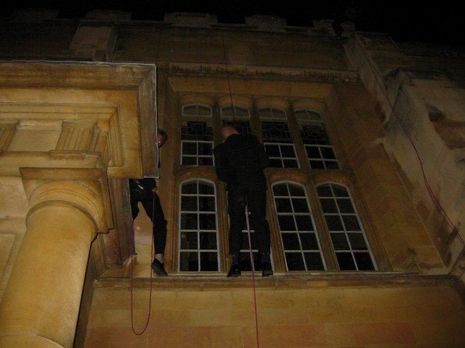
“It felt impossibly romantic,” Whipple remembers. “But fundamentally it’s students pissing about, being idiots”.
His love affair with night climbing began at home though. To the dismay of his mother, Whipple’s dad had lent him a copy of The Night Climbers of Cambridge before heading to University.
“It’s a beautiful book if you haven’t read it,” he says, gently encouraging me to borrow a copy. “It’s spectacularly well written”.
Published under the pseudonym “Whipplesnaith” in 1937, the guide is still a must-read for any aspiring night climber, detailing in vivid prose how to scale Cambridge landmarks like Senate House and King’s Chapel. It is often credited with inspiring the Cambridge tradition we now know as night climbing.
Another night climber, a second year undergraduate, was similarly inspired by Whipplesnaith’s book: his eyes light up as he recounts reading the book for the first time.
Whipple went on to try his hand at some climbing in his first term, practising first on Newnham college’s Victorian drainpipes which, I’m reliably told, are very sturdy – perfect for any novice.
Gradually growing in confidence, Whipple graduated to more challenging climbs, deciding in his third year to scale one of the spires of King’s college. “I did go up King’s chapel but not in a way I’m particularly proud of,” he says, acknowledging the assistance he received from some helpfully placed scaffolding.
“I left a toilet seat at the top and it stayed up there for a few months, which is good fun,” he says.
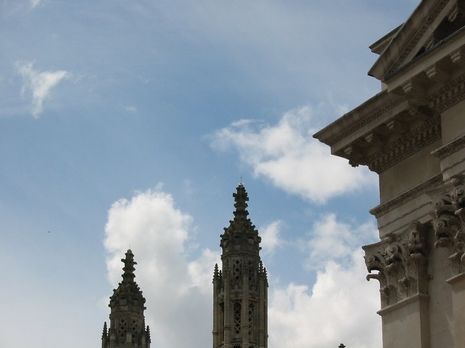
How do colleges take down the items often left by night climbers? “There were definitely pants that stayed up the entire time I was at Cambridge which probably got taken down by the process of weathering”. One particularly memorable pair of hoisted black boxer shorts were white by the time Whipple left University.
More recently, however, night climbers will often do the climb again a few weeks later to retrieve the objects they left, according to one recent graduate.
The relationship between colleges and night climbers is nevertheless understandably fraught, though it seems colleges have grown progressively strict over time.
While Whipple thinks “most of colleges […] generally seemed to be alright with it” in the early 2000s, one recent graduate paints a completely different picture, telling me that some colleges have been known to expel those caught scaling its buildings.
There’s also been a recent attempt by some who claim to be the night climbers to gatekeep the activity. “I’m not sure if the people who claim to be the night climbers are the true night climbers,” warns Whipple. “People will have assumed the banner of the night climbers”.
Indeed, we should be careful to think of night climbing as a secret society. Night climbing is often nothing more than just friends meeting informally to have a good time.
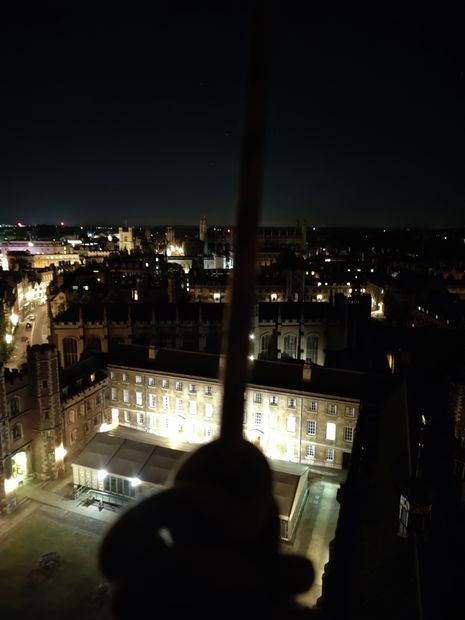
“We talk about [night climbing] as if it’s secret society or club,” says Whipple. “Partly because it’s Cambridge and it has this mystique and allure […] If this [occurred] at a less storied University, there would be a lot less indulgence of it.”
There is a sense of heritage and continuum to maintaining the night climbing tradition, but this is nothing more than a state of mind. There is certainly no official membership – as much as some may claim there to be.
Night climbing does not come without risks, however. Whipple details one particularly gruesome injury following a climb of Gonville & Caius college, which would involve an operation on his testicles.
"Although I have had children so it was successful," he reassures me. "Fairly obviously [night climbing] is not sufficiently condemned by the University and is not sensible at all".
Would he recommend night climbing to a fresher? “The absolute last thing I’d want is people to read this, do it and get hurt. But if I mean’t that really sincerely I wouldn’t be talking to you at all”.
 Comment / Plastic pubs: the problem with Cambridge alehouses 5 January 2026
Comment / Plastic pubs: the problem with Cambridge alehouses 5 January 2026 News / Cambridge academics stand out in King’s 2026 Honours List2 January 2026
News / Cambridge academics stand out in King’s 2026 Honours List2 January 2026 News / Cambridge businesses concerned infrastructure delays will hurt growth5 January 2026
News / Cambridge businesses concerned infrastructure delays will hurt growth5 January 2026 News / AstraZeneca sues for £32 million over faulty construction at Cambridge Campus31 December 2025
News / AstraZeneca sues for £32 million over faulty construction at Cambridge Campus31 December 2025 Interviews / You don’t need to peak at Cambridge, says Robin Harding31 December 2025
Interviews / You don’t need to peak at Cambridge, says Robin Harding31 December 2025






